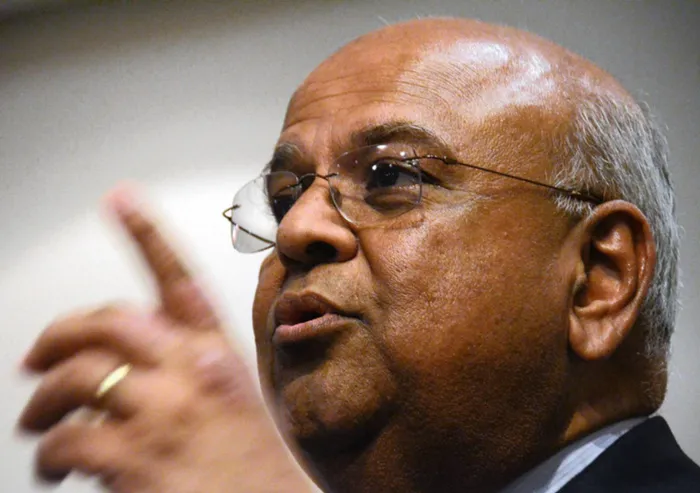SA improving, but can do more - Moody’s

South African Finance Minister Pravin Gordhan. File photo: Ian Landsberg South African Finance Minister Pravin Gordhan. File photo: Ian Landsberg
Johannesburg - A gentle pat on the back, with some reservations, came on Friday from Moody’s Investors Service.
Commenting on last week’s medium-term budget policy statement by Finance Minister Pravin Gordhan, it said: “In our view, the government’s commitment to main- taining its existing spending ceilings now looks more realistic, as does its ability to meet the unchanged deficit target for the current year.
“We base our view on revenue and expenditure trends established in the first half of the year, despite slower-than-expected economic growth.”
However, the update showed that the government’s operating costs are outstripping its revenues. This forces it to borrow simply to fund its day-to- day running costs, inflating the interest bill. The trend has pushed back the date by which the budget deficit – the gap between revenue and spending – will be cut to about 3 percent of gross domestic product (GDP) from this year’s projected 4.2 percent. A ratio higher than 3 percent means government resources are diverted from productive and social spending to the interest bill.
Moody’s cautioned that the delay in reaching the target “poses risks at a time when financial markets in the emerging world have become more volatile and when the all-important mining sector is undergoing significant profitability challenges”. In other words, government borrowing could be more difficult and costly in future and potential investors are likely to be turned off by the policy ambiguity and labour strife in the sector.
The agency said the government infrastructure programme was widening the budget deficit – which leads to higher debt levels. “Net financing requirements for 2015/16 are up by about 20 percent compared to the estimates made a year ago.”
On the positive side, the agency noted Gordhan’s emphasis on aligning the budget framework – a three-year rolling financial blueprint – with the National Development Plan. Though it said there were no “explicit references to growth-enhancing measures”, it noted an earlier decision to “press forward with the youth wage subsidy scheme over vociferous objections from Cosatu”. It saw this as a signal of the government’s determination to bring more young people into the labour force.
“The youth unemployment rate, which is nearly double that of the already high 26 percent jobless rate of the general labour force, has remained elevated, in part because of high starting salaries that have perpetuated advantages for workers already in the labour force.”
The ratings agency cited as a positive the government’s decision to press ahead with e-tolling in Gauteng, which it said was likely to encourage further private sector financing of infrastructure expansion. The participation of the private sector will reduce the cost burden on the government and public corporations.
Summing up, Moody’s said: “In mid-July, we affirmed South Africa’s Baa1 rating and maintained a negative outlook, citing both government spending restraint and improved pros-pects for structural reform implementation.” A year ago, the agency cut the country’s sovereign rating one notch from A3.
Meanwhile, South Africa has had a thumbs down from China’s Dagong Global Credit Rating, according to Kevin Lings, the chief economist at Stanlib. “It downgraded the local and foreign currency sovereign risk rating from A to A-. The negative outlook has also been maintained,” he said.
Dennis Dykes, the chief economist at the Nedbank Group, said A- was above the rating of other agencies “so it should not have much effect”. However, he added: “It’s never a good thing to be downgraded, especially with the negative outlook maintained.” - Business Report